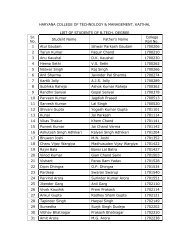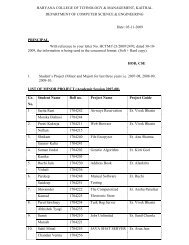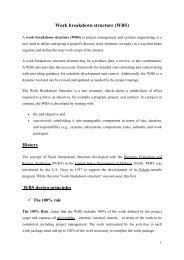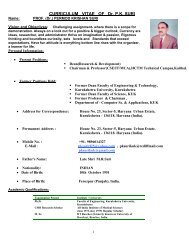You also want an ePaper? Increase the reach of your titles
YUMPU automatically turns print PDFs into web optimized ePapers that Google loves.
LECTURE NOTES OF ADVANCED DATA STRUCTURE (MT-CSE 110)<br />
The number of branches associated with a node is the degree of the node.<br />
When the branch is directed toward the node, it is an indegree branch; when<br />
the branch is directed away from the node, it is an outdegree branch.<br />
If the tree is not empty, the first node is called the root, which has the indegree<br />
of zero. A leaf is a node with an outdegree of zero.<br />
An internal node is a node which is neither the root nor a leaf. A node can be a<br />
parent, a child or both. Two or more nodes with the same parent are called<br />
siblings.<br />
A path is a sequence of nodes in which each node is adjacent to the next one.<br />
An ancestor is any node in the path from the root of a given node. A<br />
descendent is any node in all of the paths from a given node to a leaf.<br />
The level of a node is its distance from the root. The height of the tree is the<br />
level of the leaf in the longest path from the root plus one.<br />
A subtree is any connected structure below the root. A tree is a set of nodes<br />
that is:<br />
a. either empty<br />
b. or has a designated node called the root from which hierarchically<br />
descend zero or more subtrees which are also trees.<br />
BINARY TREES<br />
A binary trees is a tree in which no node can have more than two subtrees. In<br />
other words, a node can have zero, one or two subtrees. These subtrees are<br />
designated as the left subtree and right subtree.<br />
Prepared By :<br />
Er. Harvinder Singh<br />
Assist Prof., CSE, H.C.T.M (Kaithal) Page ‐ 180 ‐







